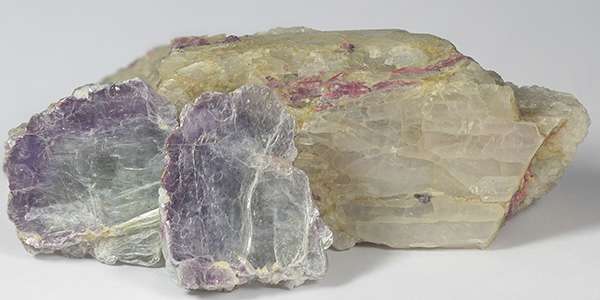What is Spodumene?
Spodumene is a lithium-bearing mineral found in hard rock formations, primarily located in regions such as Australia, Canada, and parts of Africa, and it accounts for approximately 50-60% of the world's lithium production. Another significant source of lithium from hard rock is lepidolite, a lithium-rich mica mineral commonly found in granite pegmatites.
Spodumene (Hard Rock) to Lithium Process Summary
The process of converting spodumene (Hard Rock) or lepidolite to lithium involves extracting the mineral from hard rock, then subjecting it to high-temperature roasting and subsequent chemical treatments to produce lithium carbonate or lithium hydroxide. These lithium compounds are then purified to meet battery-grade standards for use in various applications.
Challenges in lithium extraction from Spodumene ( Hard rock)
Lithium extraction from spodumene (hard rock)or even lepidolite faces several challenges including achieving a high recovery rate of battery-grade lithium, which is complicated by potential material loss during the intricate extraction process. Ensuring the purity and proper crystallization of the final product demands advanced purification techniques and precise control over processing conditions. Additionally, maintaining process reliability while optimizing costs is crucial, as fluctuations in ore composition and operational conditions can impact both quality and economic feasibility.
Crucial Role of Filtration in Lithium Extraction from Spodumene (Hard Rock)
Filtration and separation can help improve both the process reliability for producing consistent high-purity products and for improving the product yields, reducing product re-work, and overall operating costs.
Pall Corporation: Filtration expert to separate Lithium for EV Battery production
Pall Corporation can help optimize the spodumene concentrate extraction process applying a variety of filter technologies to remove solid particulates and dissolved impurities from the lithium-bearing solution, resulting in a high-purity lithium product, suitable for use in batteries.
-
Hard rock to Lithium Carbonate
-
Hard rock to Lithium Hydroxide
Typical Process Flow Sheet for Lithium Carbonate from Hard Rock
| Filter | Filtration Value | Separation Product |
|---|---|---|
| 1 | Remove solid particulate from furnace flue gas to prevent emissions | Gas Blowback Filter |
| 2 | Prevent ingression of tailings impurities and carryover sand into system from upstream processes | 1 - 5 Micron Filter |
| 3 | Prevent ingression of impurities into system from injected precipitation chemicals | 1 - 5 Micron Filter |
| 4 | Protect Ion Exchange (IX) and crystallizer from carryover solids coming from the filter press | Regenerable Filter |
| 5 | Remove trace solids and Ion Exchange resin fines before the crystallizer | 1 Micron Filter |
| 6 | Prevent ingression of impurities into system from injected Sodium Carbonate solution | 1 - 5 Micron Filter |
| 7 | Recover fine particles of Lithium Carbonate from mother liquor recycle stream | Regenerable Filter |
Typical Process Flow Sheet for Lithium Hydroxide from Hard Rock
| Filter | Filtration Value | Separation Product |
|---|---|---|
| 1 | Remove solid particulate from furnace flue gas to prevent emissions | Gas Blowback Filter |
| 2 | Prevent ingression of tailings impurities and carryover sand into system from upstream processes | 1 - 5 Micron Filter |
| 3 | Prevent ingression of impurities into system from injected precipitation chemicals | 1 - 5 Micron Filter |
| 4 | Protect Ion Exchange (IX) and crystallizer from carryover solids coming from the filter press | Regenerable Filter |
| 5 | Prevent ingression of impurities into system from injected Sodium Hydroxide solution | 1 - 5 Micron Filter |
| 6 | Recover fine particles of Lithium Hydroxide from mother liquor recycle stream | Regenerable Filter |
Learn more about the solution that can support your applications or contact an expert today.
For more information on improving the efficiency of your processes, contact our team of filtration experts.







